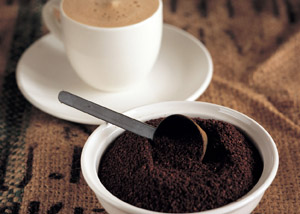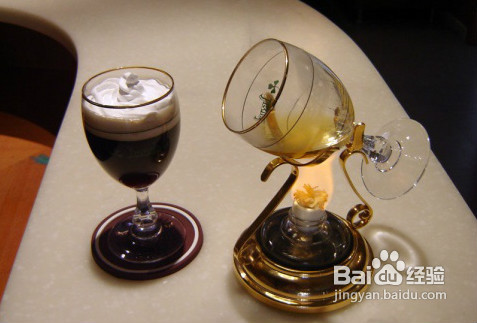Floral fragrance of Columbia Santa Rita Manor Coffee Flavor and Taste introduction to boutique Coffee
After the founding of the United States, there was a dispute over the location of the capital. The North wants to locate its capital in New York. And the south wants the capital to be located in the south. In the end, both the North and the South of the United States
Washington, D.C. Flag
Washington, D.C. Flag
Give in and build a new city as the capital of the United States in the south not far from the north. The location is located by Madison (James Madison,1751-1836, the fourth President of the United States) and Alexander Hamilton (Alexander Hamilton, January 11, 1757-July 12, 1804, one of the drafters of the Constitution, was the first Treasury Secretary of the United States) in Thomas Jefferson (April 13, 1743, ─ was the third President of the United States on July 4, 1826). It was also discussed at a dinner invited by the main drafter of the American Declaration of Independence. At that time, the "federal" city was planned as a diamond area covering an area of 100 square miles. Its actual location on the Potomac River is determined by President Washington, who himself suggested that the capital of the United States be called a "federal city." But on September 9, 1791, the capital of the United States was named Washington. Although Washington himself lives in Mount Vernon not far from Washington, he rarely visits Washington. In en:Battle of Fort Stevens1870, the District of Columbia set up local government agencies, but because the heads of local government at that time were so extravagant and wasteful, the United States Congress soon abolished the direct administration of local government agencies over the District of Columbia for nearly a century. The Washington Monument opened in 1888. The resident population of the District of Columbia reached its highest level of 802178 in 1950. Subsequently, the population decreased due to the gradual migration of residents to the periphery of the city. On March 29, 1961, residents of the District of Columbia were granted the right to vote for the president. It is the region with the largest number of electoral votes per capita. In 1974, Walter Washington became the first elected mayor of the District of Columbia. The Washington subway opened in 1976. Marion Barry became mayor of the District of Columbia in 1978. In 1990, the man was sentenced to six months in prison for taking drugs. In 1990, Sharon Pratt Kelly became the first black female mayor of an equally important city in American history. Marion Barry was re-elected mayor in 1994. During his term of office in 1994, the District of Columbia almost went bankrupt, so that the United States Congress directly appointed a finance committee. Anthony Williams was elected mayor in 1998, and the District of Columbia's finances were restored during his term of office. The man was re-elected in 2002. On September 29th, the Montreal Expos of the major league officially moved to Washington and changed its name to Washington Nationals, which is administratively directly under the jurisdiction of the federal government and does not belong to any state. On May 15, 1984, Washington and Beijing became sister cities.
The main varieties of Colombian coffee are small grains of coffee. Plants are small trees or large shrubs, 5-8 m tall, usually much branched at base; old branches gray-white, nodes dilated, young branches glabrous, compressed. Leaves thinly leathery, ovate-lanceolate or lanceolate, 6-14 cm long and 3.5-5 cm wide, apex long acuminate, acuminate part 10-15 mm long, base cuneate or slightly obtuse, rarely rounded, entire or shallowly wavy, both surfaces glabrous, lower vein axils with or without small pores; midrib raised on both surfaces of leaf, 7-13 on each side of lateral veins; petiole 8-15 mm long Stipules broadly triangular, arising from the tip of the upper part of the young branch conical or awn tip, the tip of the old branch is often protruding tip, 3-6 mm long. Cymes are clustered in leaf axils, each with 2-5 flowers, without a total pedicel or with a very short peduncle; the flowers are fragrant, with pedicels 0.5-1 mm long; bracts basally more or less connate, dimorphic, of which 2 are broadly triangular, nearly equal in length and width, and the other 2 lanceolate, 2 times the width of Colombia's suitable climate provides a real sense of "natural pasture" for coffee. Coffee trees in Colombia are mainly cultivated in the Andes, on steep slopes about 1300 meters above sea level, where the annual temperature is about 18 degrees Celsius, annual rainfall is 2000 to 3000 millimeters, latitude 1 °- 11 °15 north, longitude 72 °- 78 °west, the specific range of elevation is more than 2.000 meters. A special combination of factors, latitude, altitude, soil, plant origin of species and varieties of coffee production in Colombia's coffee growing area, rain patterns produced by the climate of the coffee growing area and tropical convergence, changing topography, luminosity, favorable temperature range throughout the year, moderation and Rain Water's distribution And include some common cultural practice areas in the process of selective logging and transformation, including washing and drying. Very suitable for the growth of coffee, mild climate, humid air, and can be harvested regardless of season. This is why Colombian coffee is of high quality. Colombia has three Codiera mountains running north and south, right into the Andes. Coffee is grown along the highlands of these mountains. The mountain steps provide a diverse climate, where the whole year is the harvest season, and different kinds of coffee ripen at different times. And fortunately, unlike Brazil, Colombia doesn't have to worry about frost. About 2.7 billion coffee trees have been documented in Colombia, 66 per cent of which are planted in modern plantations and the rest on small traditional farms.

Important Notice :
前街咖啡 FrontStreet Coffee has moved to new addredd:
FrontStreet Coffee Address: 315,Donghua East Road,GuangZhou
Tel:020 38364473
- Prev

Characteristics of Coffee Flavor and taste in Manor Ireta, Panama
Panama is located in the isthmus of Panama in Central America, bordered by Colombia to the east, the Pacific Ocean to the south, the map of Panama to Costa Rica to the west and the Caribbean Sea to the north. The territory is S-shaped to connect North and South America, and the Panama Canal connects the Atlantic and Pacific oceans from north to south. It is known as the bridge of the world. [5] Panama has a land area of 75517 square kilometers.
- Next

Introduction to the Coffee of Esmeralda Manor in Panama with a clean taste
Panama is located in the isthmus of Panama in Central America, bordered by Colombia to the east, the Pacific Ocean to the south, the map of Panama to Costa Rica to the west and the Caribbean Sea to the north. The territory is S-shaped to connect North and South America, and the Panama Canal connects the Atlantic and Pacific oceans from north to south. It is known as the bridge of the world. [5] Panama has a land area of 75517 square kilometers.
Related
- Does Rose Summer choose Blue, Green or Red? Detailed explanation of Rose Summer Coffee plots and Classification in Panamanian Jade Manor
- What is the difference between the origin, producing area, processing plant, cooperative and manor of coffee beans?
- How fine does the espresso powder fit? how to grind the espresso?
- Sca coffee roasting degree color card coffee roasting degree 8 roasting color values what do you mean?
- The practice of lattes: how to make lattes at home
- Introduction to Indonesian Fine Coffee beans-- Java Coffee producing area of Indonesian Arabica Coffee
- How much will the flavor of light and medium roasted rose summer be expressed? What baking level is rose summer suitable for?
- Introduction to the characteristics of washing, sun-drying or wet-planing coffee commonly used in Mantenin, Indonesia
- Price characteristics of Arabica Coffee Bean Starbucks introduction to Manning Coffee Bean Taste producing area Variety Manor
- What is the authentic Yega flavor? What are the flavor characteristics of the really excellent Yejasuffi coffee beans?

